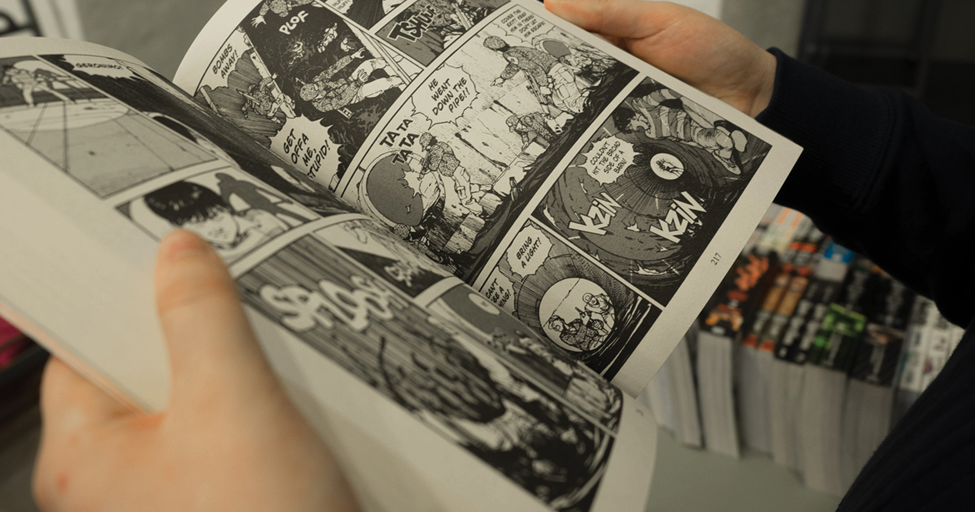
How to Market Your Book: 8 Proven Strategies for Success
January 13, 2021
How to Self-Publish a Graphic Novel
March 3, 2021How to Write a Good Author Bio
So you’ve written an article, self-help book, or novel—congratulations! Perhaps you’re in the process of marketing your book and are neck deep in the world of advanced review copy (ARC) reviews, blog posts, and book trailers. Soon your work will be out in the world.
But wait! Your writing journey isn’t over just yet. One crucial part to marketing your book and introducing yourself to your readers is your author biography. Writing a good author bio can seem like a daunting—if not tedious—task. After all, how do you condense a person’s life into a few short lines?
Elite Authors is here to help. Read on for some tips on writing the perfect author bio.
Keep it short and sweet
If you Google “How long should an author bio be?” you’ll find that the suggested word count changes depending on the source. One thing most people agree on, however, is that a good author bio should be short enough to avoid boring readers and detailed enough to entice your audience.
An author’s professional bio does three things. It establishes your credibility as an expert on the subject you’ve written about. It helps each reader get to know you. And it encourages people to check out more of your work.
A quality author bio looks deceptively simple. It may be just a few sentences long, but your bio is an important factor in marketing your personal brand.
The goal of an author bio
Through your bio, you can show off your personality and put a human behind the words on the page. Moreover, it can establish you as an authority on the subject you’ve written about.
Additionally, a good author bio appeals to your current audience, keeping them interested in the things you create. And, of course, it entices potential readers to follow your work.
When writing your bio, ask yourself: How do you want people to perceive your work? Who is your target audience, and why? The answers to these questions will inform the tone you use and your writing style.
The power of concision
Maybe you’ve crafted a detail-rich fantasy novel that spans thousands of years and hundreds of pages. Maybe you’ve written a thorough how-to guide that every aspiring entrepreneur must read. Maybe you’ve perfected the art of essay writing.
There are many situations where long-form writing is necessary. This is not one of those situations.
A good author bio is short, sweet, and snappy. It fits on the bottom of a blog post or on an author page in the back matter of your book. It reads quickly, grabbing your reader’s attention and holding it for a precious few sentences.
Word count suggestions for a good author bio
You may need to write different author bios for different situations. In general, though, aim for under three hundred words.
For a short bio—good for online profiles, like on your Twitter account or at the bottom of guest posts on blogs—aim for about forty words.
A medium bio, which you might use in query letters for a literary agent, press kits, and other marketing material, should be from forty to 250 words.
Beth Barany, author of Henrietta the Dragon Slayer and other novels, suggests writing a variety of bios for different situations: bios that are ten words, twenty-five words, fifty words, and one hundred words.
Whatever you do, remember: three solid sentences can do wonders. Three pages will drag.
Avoid first person (usually)
First person is ideal for many things: diaries, letters, and text messages. But for a good author bio, you’ll generally want to stick to third person.
Pitfalls of using first person
Authors customarily write their bios in third person. This is because third person generally comes across as more professional. Conversely, first person can seem amateurish or even boastful. Moreover, if you use “I,” the focus ends up being more on you than on your book.
Times to use first person
Sometimes, though, you can bend or break the rules. You can get away with first person if it’s an important part of your author brand or if you’re writing for a personal blog. (Even so, many author websites use third person.)
With some publications, first person is standard for author bios. It’s important to stay flexible and keep your audience in mind.
Keep it updated
Consider this scenario: Annie Author comes out with an exciting new sci-fi series. When eager readers go to her author website to learn more about her, however, they come across a bio that reads like this:
“Annie Author has loved writing since 1987, when she won first place in her middle school poetry contest. Her latest novel, Vanished with the Breeze, comes out in September 2007.”
This is a prime example of what not to do. The information in this bio is far out of date and mostly irrelevant. Readers won’t be interested in a middle school poetry contest from two decades ago. Moreover, Annie Author has a new series out in the present day—but there’s no mention of it in her professional bio.
As your life changes, so too must your author bio.
Simple guide for keeping your bio up to date
You don’t need to update your bio every week (unless a major life change occurs between week one and week two). However, it’s important to make sure your bio stays up to date.
Consider updating your author bio at the end of each year. Additionally, when specific important events happen—you launch a new project, publish a new book, or win a new award, for example—you’ll want to update your bio to include that too.
Multiple bios for multiple audiences or pen names
Your author bio must be relevant to your work and your life. But there’s another reason to update your author bio: when you’re writing for a different audience.
If you write in a variety of genres, you’ll need to write multiple author bios to match the tone of each genre. This is important especially if you write under a pen name or use multiple pen names for different genres.
The author bio you create under your pen name for romance fiction will look vastly different from the bio you use for your articles on thermodynamics.
If you normally write nonfiction books about economics but pivot to children’s adventure stories, you’ll need to write a new bio to fit a tone that reaches your new audience.
Get personal
A good author bio balances professionalism with personality. You may want to be serious, but sharing too little personal info can strip your bio of appeal and result in a standard, boring text.
The difference between too personal and not personal enough
Your author bio is a chance for you to show your audience who you really are. So why not dive into the finer details? Surely the average potential reader is dying to know your favorite color, your least favorite cereal brand, or how you came up with your protagonist’s quirky middle name!
A common piece of writing advice is to kill your darlings. Indeed, sometimes you must trim down the more personal facts. Before you write about how you’ve always dreamed of becoming an author, consider that most authors share that dream. Many authors have written something to that effect. And many readers won’t particularly notice or care.
If you’re a first-time author (or self-proclaimed “aspiring writer”), you don’t need to say so. Readers generally don’t care if this is your first work. Phrases like “first-time” and “aspiring” can also indicate a lack of confidence.
If you don’t have any other published works out, draw on the experience that you do have to establish credibility.
While you should list some of your achievements, it’s not necessary to write about every last thing you’ve accomplished. Readers may skim or skip over your bio entirely. Worse, overlisting your achievements can come off as overselling, damaging your credibility.
Information to include in a good author bio
So you know what not to include. But what makes a bio appealing?
Information relevant to your book will help you establish credibility. This can include your career, your education, or any professional experiences you’ve had that relate to your book.
Maybe your love of marine biology inspired that sci-fi book about talking dolphins. Perhaps you’re interested in medieval history—a perfect fact to mention if you’re the author of a historical romance, for example.
If, however, your education doesn’t relate to your book—for example, if you’ve written a children’s fantasy novel and have a math degree—you can leave that information out.
To brainstorm, make a list of things that you believe encompass you. This list can include your hobbies and interests, education, memberships to any relevant organizations, achievements or awards, and qualities about yourself that you like. Then, narrow that list down to two to three that most relate to your book.
Write out a few different drafts of your author bio. In your initial draft, don’t worry about word count. Just get down all the information you feel is relevant. Once you have that, you can trim away wordiness. Ask yourself, “Does this information really matter? Does my audience (agents, publishers, and readers) need to know this?”
From there, you can whittle down your work to meet word count.
The importance of personality
A personal author bio gives readers a sense of familiarity with you. It shows them that there is a person behind the words they’ve read. Because of this, a quality author bio can make readers more interested in connecting with you.
Moreover, adding interesting details can help your bio stand out. Finally, a personal author bio can establish you as an expert on the topic you’ve written about.
Be mindful, however, that you don’t get carried away in trying to be as personable as possible. The information in your bio should be clear, unhindered by the jokes you crack. If you leave out important information for the sake of a humorous aside, the result can be off-putting.
Call your readers to action
An additional section to your author bio is the call to action (CTA). As the name implies, a CTA asks your audience to take a specific action. You might ask readers to email you, join a mailing list, visit your author website, or any number of things.
Moreover, a CTA connects to your readers’ desires and inspires your audience to take action.
Guidelines for writing a CTA
As with the rest of your bio, concision is key. Keep your CTA brief and clear. Match the tone of your author bio. You will throw off your readers if you suddenly shift from somber, poetic prose to “…and that’s why you should buy my book today!”
Your CTA should be simple, something readers can do easily. In an online publication, a CTA might be an invitation to click a link, visit your social media profile, or tag a friend in a social media post.
Times to include a CTA
CTAs aren’t always necessary. If you feel like you’re shoehorning a CTA in, it may be better to leave it out. Still, CTAs are a quick and simple way to further connect with your readers.
One way to include CTAs is to list your social media platform handles, your email, or a link to your website. This will allow readers to more easily find you online and check out your work.
Market your book with Elite Authors
Writing can be a lonely job, filled with early mornings or long nights over a keyboard or journal. However, marketing your book can be anything but lonely.
Here at Elite, our services help you with writing and editing your book marketing copy. This includes anything from blurbs to, yes, the elusive author bio! Get in touch today for a quote. Together, we’ll work to best meet your needs.



